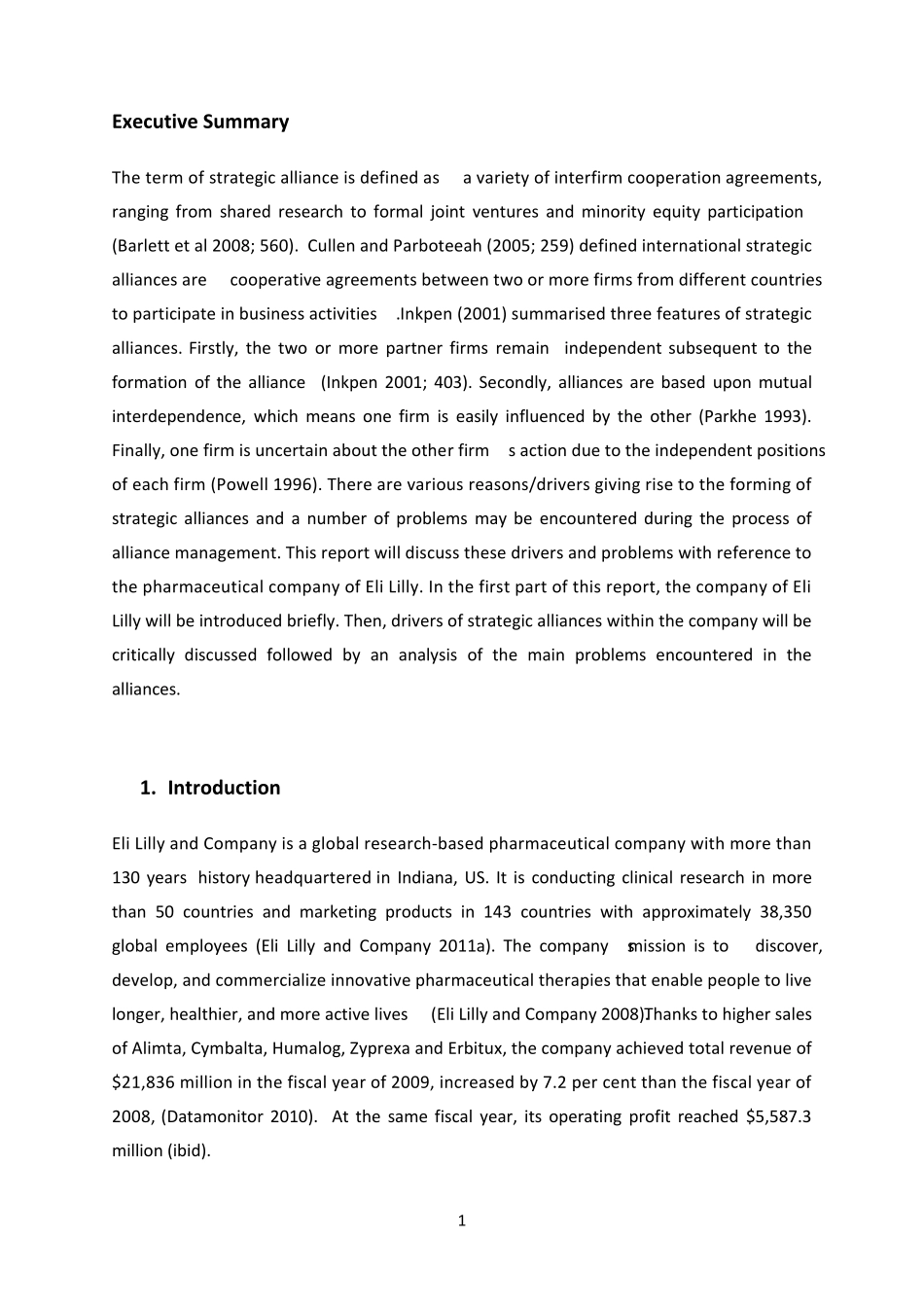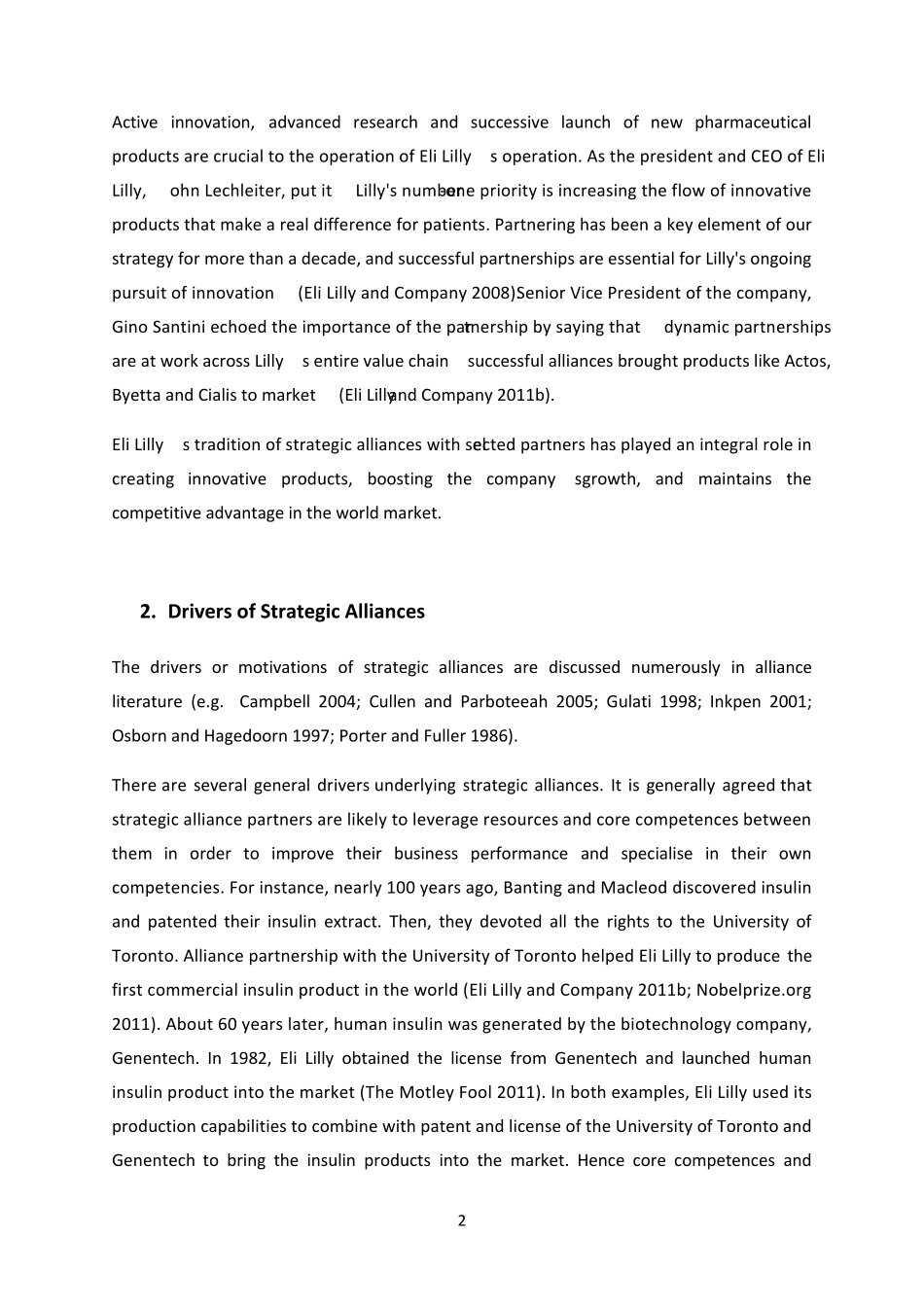CONTENT Executive Summary ....................................... 1 1.Introduction ................................................. 1 2.Drivers of Strategic Alliance ........................ 2 3. Main Problems of Strategic Alliance ......... 5 4. Conclusion .................................................. 7 5. References .................................................. 8 1 Executive Summary The term of strategic alliance is defined as “a variety of interfirm cooperation agreements, ranging from shared research to formal joint ventures and minority equity participation” (Barlett et al 2008; 560). Cullen and Parboteeah (2005; 259) defined international strategic alliances are “cooperative agreements between two or more firms from different countries to participate in business activities”. Inkpen (2001) summarised three features of strategic alliances. Firstly, the two or more partner firms remain “independent subsequent to the formation of the alliance” (Inkpen 2001; 403). Secondly, alliances are based upon mutual interdependence, which means one firm is easily influenced by the other (Parkhe 1993). Finally, one firm is uncertain about the other firm’s action due to the independent positions of each firm (Powell 1996). There are various reasons/drivers giving rise to the forming of strategic alliances and a number of problems may be encountered during the process of alliance management. This report will discuss these drivers and problems with reference to the pharmaceutical company of Eli Lilly. In the first part of this report, the company of Eli Lilly will be introduced briefly. Then, drivers of strategic alliances within the company will be critically discussed followed by an analysis of the main problems encountered in...


